LMS software development is changing the face of e-learning, and it’s estimated that the global LMS market, which was $18.7 billion in 2022, will reach an impressive $46.3 billion by 2027. This exponential growth underlines the growing demand for customized educational solutions to be able to fit a wide range of learning environments. For businesses, educators, and entrepreneurs, developing a custom LMS presents an unparalleled opportunity to stand out in this rapidly evolving market.
In this guide, we’ll explore the definition, benefits, cost, trend, and a step-by-step process of learning management system development, from defining your vision and selecting the right technologies to ensuring an engaging and intuitive user experience. Whether you’re building for academic institutions or corporate training, mastering these steps is your key to unlocking success in the competitive world of e-learning.
What is a Learning Management System (LMS)?
The LMS is a software platform created to host online learning and training programs with an increase in engagement. The LMS acts as the single location for the creation, management, and delivery of learning content, making it indispensable to organizations and institutions but also greatly enhancing individual learning. From enabling digital classrooms in schools to employee training in corporate settings, the LMS has reshaped the methodology of knowledge imparted and acquired.

E-learning demand is rapidly increasing, so most of the business sectors now focus on LMS software development for efficient, customized solutions. A fully featured LMS normally covers class formation, student registration, monitoring the progress, and collaboration among members—all aspects that combine for an end-to-end experience of learning.
The rapid growth of the global market has accelerated the development of the learning management system. The possibility of innovation and adaptability in learning environments is further increasing with the adoption of these systems by organizations across sectors.
Types of learning management system
Understanding the various types of learning management systems will help in designing a solution that best fits specific organizational needs. Choices of installed, web-based, self-hosted, SaaS, open-source, or closed-source depend upon such aspects like flexibility, control, and scalability. In those cases when business solutions are supposed to be adapted to particular needs, custom learning management system development allows for the integration of certain features while adjusting to specific requirements. Below, we look at the main categories of LMS to help you identify which best fits your goal.
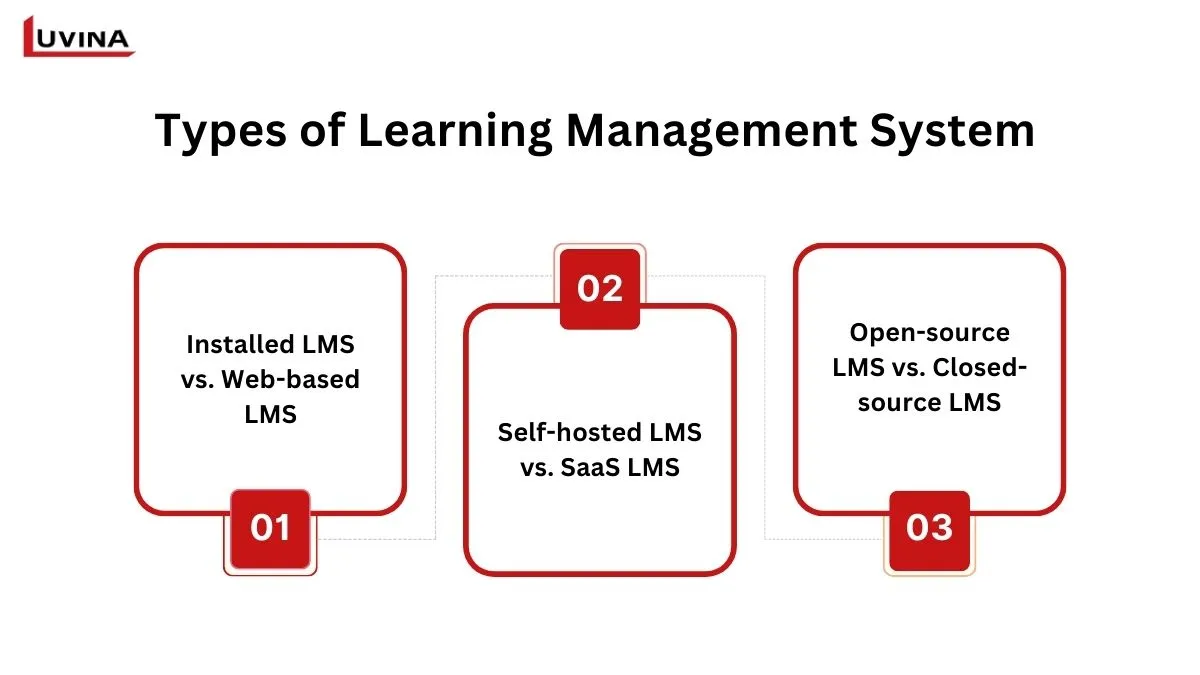
1. Installed LMS vs. Web-based LMS
On-premises installed LMS platforms are limited to access where the system has been hosted. They do give full control over data but lack flexibility, as in the case of web-based solutions. Web-based LMS systems give learners freedom of access from anywhere and at any time using the internet. This approach, which has been highly appreciated during LMS software development, does not bind course delivery geographically and hence can facilitate a very learner-centered experience.
2. Self-hosted LMS vs. SaaS LMS
A self-hosted LMS gives organizations full control over the hosting environment, allowing customization but demanding IT expertise for maintenance, security, and updates. SaaS LMS platforms, managed entirely by the vendor, simplify deployment by handling infrastructure, upgrades, and security, freeing businesses to focus on content creation and learner engagement. Collaborating with a skilled learning management system developer can help determine the best option based on your technical capacity and operational needs.
3. Open-source LMS vs. Closed-source LMS
Open-source LMS platforms let one access the source code, thus allowing extensive customization and improvements by the community, but technical expertise is required in their updates and upkeep. On the other hand, a closed-source LMS will have its support managed by the vendor himself, with upgrades under a license model to smoothen the user experience. Though open-sourced solutions are considered for flexibility, generally, closed-source systems are preferred for convenience and reliability.
What are the benefits of using an LMS?
The implementation of the LMS has proved to be an excellent tool for any organization in managing its training processes. With custom LMS software development, it can be possible for any business to devise solutions according to their exact needs to maximize learning outcomes and operational efficiency. Some of the key benefits that an organization can achieve by implementing LMS are listed below:
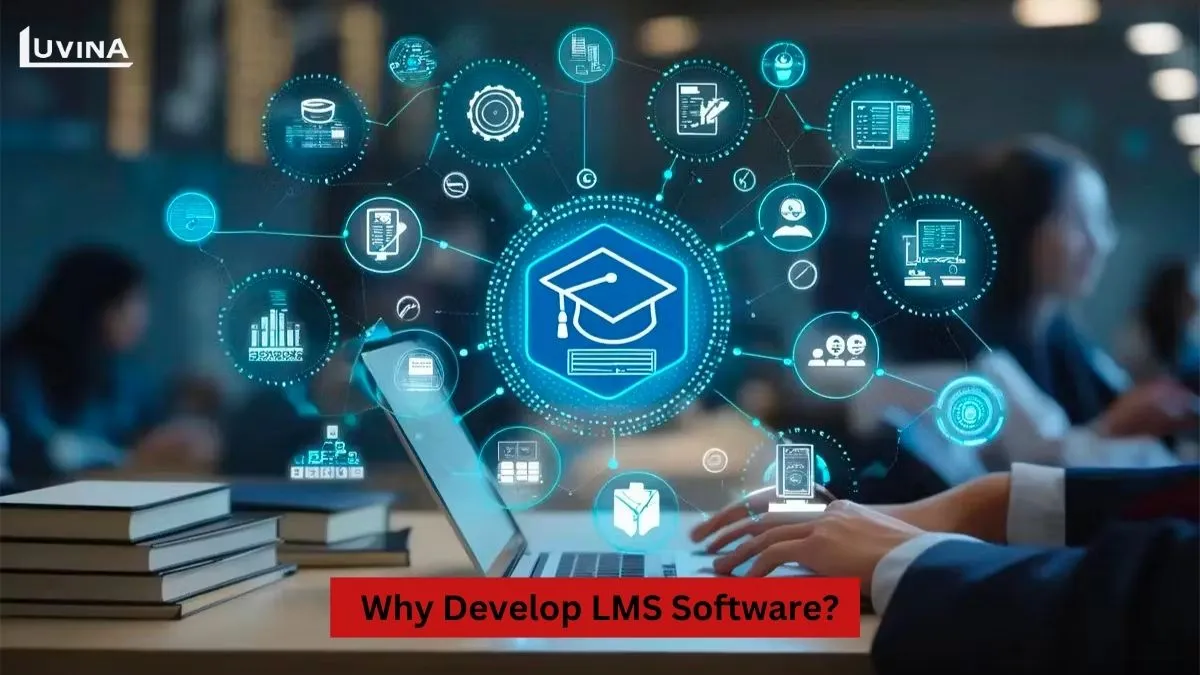
- Tailored learning solutions: With a customized LMS, you will be able to construct learning platforms that will be tailor-made to suit the aims and requirements of your organization, thus giving a better environment for training than some off-the-shelf solutions.
- Improved accessibility and convenience: Mobile-friendly and cloud-based access can improve accessibility, allowing the learners to engage in the training content in their style and at their speed for flexibility and ease of training.
- Centralized management: Brings all learning materials into one platform, allowing you to manage, update, and track courses easily. This centralized system improves administrative efficiency and reduces the complexity of managing multiple tools or platforms.
- Enhanced learner engagement: Personalized learning paths and interactive features like quizzes, discussions, and progress tracking keep learners motivated and engaged, leading to higher retention and better performance.
- Comprehensive analytics and reporting: LMS platforms give very minute details about learner performance, hence allowing the study of the effectiveness of training programs and the identification of areas that need improvement. The data-driven approach leads to continuous enhancement in learning outcomes.
- Cost-effectiveness over time: While initially investing a lot in LMS application development might be costlier, it will save subscription costs to third-party service providers in the long run. Besides, this also cuts down on costs related to conventional training methods such as workshops or printed material.
- Enhanced security and compliance: Security can be implemented to a full extent for sensitive data, considering the regulations of the industry. This is highly important in industries that have strict data protection and privacy policies.
- Scalable growth: Your LMS can grow with your organization. A customized system allows you to scale up for additional users, adding new features without losing the performance of the platform.
How do you develop a learning management system from scratch?
Creating an LMS from scratch is a strategic endeavor that requires meticulous planning and execution. Whether it is employee training improvement or giving a platform for educational purposes, following a certain development roadmap makes a difference. You can avail the benefits of LMS software development by having a system according to your unique requirements. Let’s dive into the main steps required to create LMS from scratch, starting with an assessment of needs to the very implementation of a successful development plan.
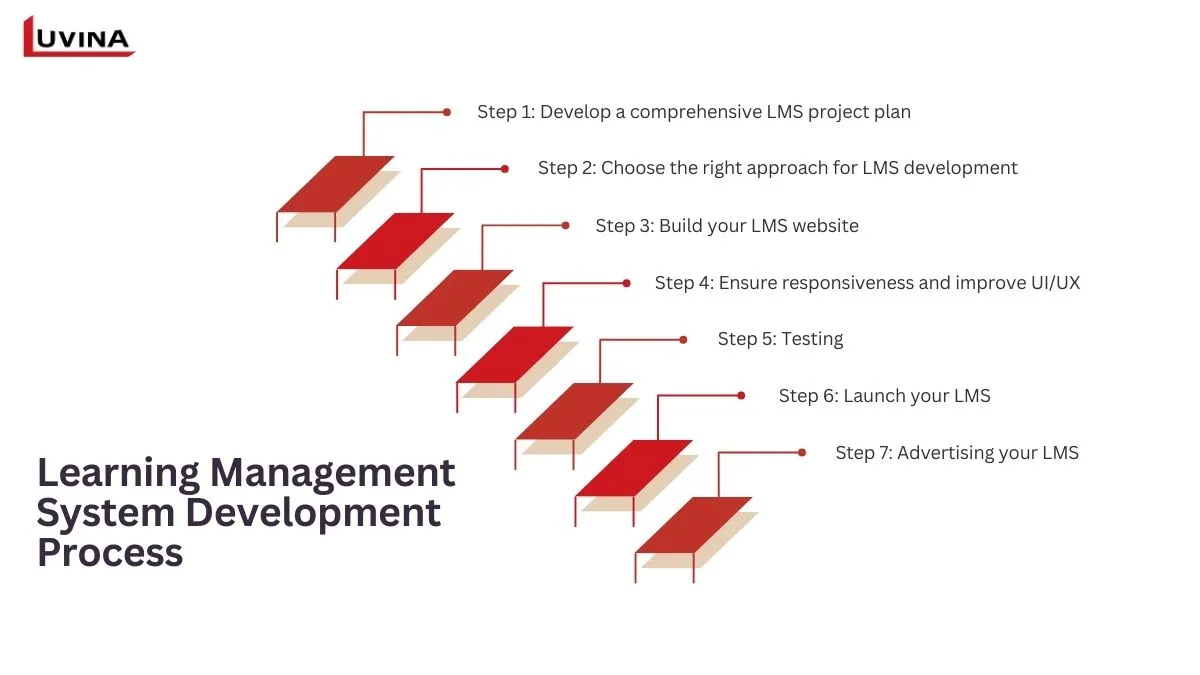
Step 1: Develop a comprehensive LMS project plan
Before delving into the technicalities, the first step in learning management system development is to outline a detailed project plan. Idea validation should be the first thing one does: whether investing in a custom-built LMS aligns with organizational goals and whether it will fix current challenges. Consider the following key points:
- Target audience: Who will use the system? Are they employees, students, or professionals? Understanding your audience helps determine the features and design.
- Core features: What essential functionalities must the LMS have? Think about user management, content delivery, assessments, and tracking capabilities.
- Budget and investment: How much will you invest in learning management system development? Your budget will influence the scope and technology stack.
- Success metrics: Define how you’ll measure the LMS’s success—whether it’s through learner engagement, reduced training costs, or improved productivity.
- Project team: The development team stakeholders will lead the process of implementation on the platform, which also includes the LMS administrator.
- Choosing the right tech stack: The development team must identify suitable technologies and create technical documentation outlining platform features, user roles, and system interactions. For example, programming languages and frameworks (JavaScript, Python, React, Django, etc.); database management (MySQL, MongoDB, etc.); cloud hosting and deployment (AWS, Azure, etc.); and eLearning standards integration (SCORM, xAPI, and LTI, etc.).
Step 2: Choose the right approach for LMS development
The second important decision in developing an LMS is about the strategy that needs to be followed in developing your system. Whether custom-made or a ready SaaS solution, each alternative option has its share of pros and cons. A key step in this direction will involve the selection of the right learning management system developer who will be able to help you fulfill your dream.
When you select the option to create an LMS from scratch, it means that you will have full control over the design, features, and functionality in your hands; hence, the system will turn out to be an exact fit for the needs within your organization. The development of a fully customized LMS requires several hundred hours of coding, integrating features, and testing, which is extremely time-consuming.
On the other hand, it may be quicker and easier to pick a SaaS platform but probably comes at a higher cost associated with ongoing fees with a lack of full customization. Where the choice happens this way, this might lead you to pay against licensing and per-user charges, along with additional add-ons and integrations from third-party options. Though comparatively inexpensive at the start, costs eventually build over time.
Consider carefully the long-term implications of each option because of the IT setup and budget of your organization before making your choice. Allow the service provider whom you will engage to ensure clear communication, relevant experience in LMS development, and strong after-sales support.
Step 3: Build your LMS website
Upon the choice of proper ground and then designing the skeletal outline, one reaches building their LMS website. Both the building of the site’s content and its development technically come one by one here. Here, course creation should be the first thing to be done on your LMS platform: design course pages, add elaborate descriptions, and insert various multimedia elements: videos, images, and downloadable files. Design courses in such a way that they will correspond with the needs of your learners and the main goal of your LMS.
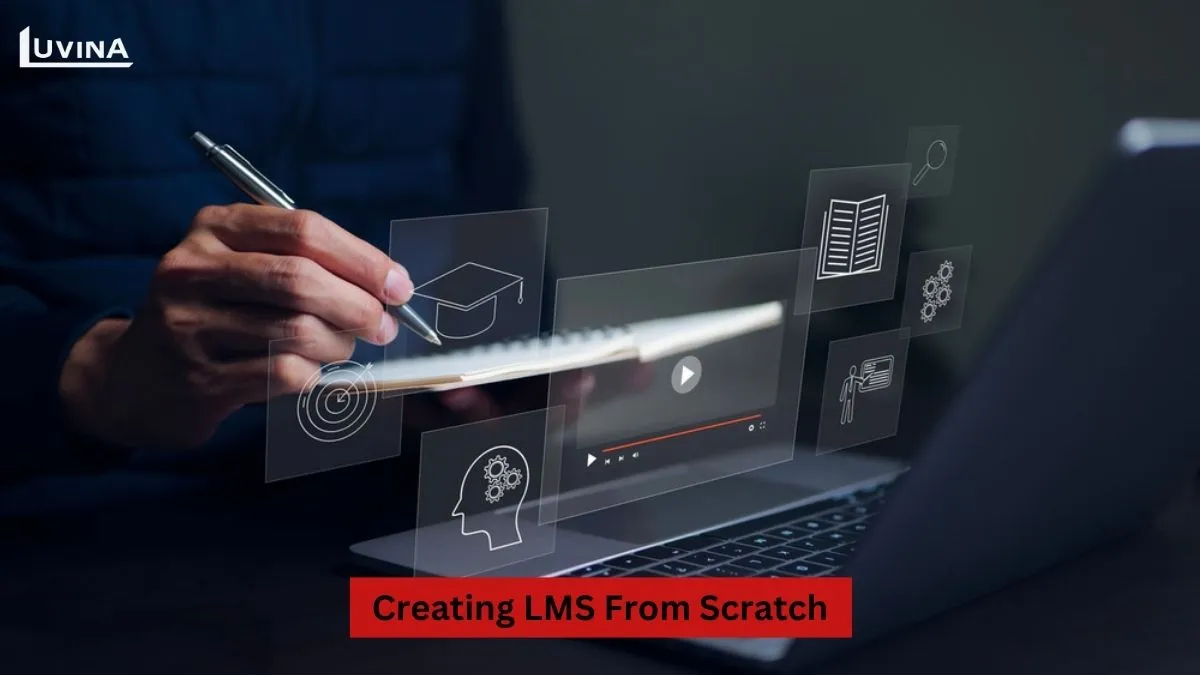
Another important consideration at this point is the development of essential features, such as quizzes or tests. This will give you an insight into the knowledge and progress of your users. These can be personalized to meet learning objectives or provide an improved experience for students and employees. The whole process of platform development should include seamless integrations of both the front and back ends to ensure that the LMS works and functions properly.
Also, in LMS software development, it is worth considering the construction of an MVP at an early stage of the process. In this way, you will have the chance to test the core functionalities with real users, getting highly valued feedback for further enhancements of the LMS before investing additional resources in the complete platform. MVP is cheaper to check your ideas and faster to start up, together with less risk, while you assure yourself that LMS will cover real user needs accordingly.
Step 4: Ensure responsiveness and improve UI/UX
A fully responsive LMS platform ensures continuity in the user experience, whichever device is used to access the site. This design needs to adapt to desktop, smartphone, and tablet-sized screens. Responsiveness means the LMS is working and looking just right in every browser, be it Windows, Linux, Mac, Android, or iOS. The more flexibility this affords translates to better accessibility to the users using whatever device.
Besides responsive design, the concentration should be on the overall UI/UX to make the platform intuitive and user-friendly. Be it a teacher, student, or administrator, the interaction with the LMS should be smooth and efficient. Consider the implementation of a dedicated mobile application that could work even better, be more usable, and let learners access course materials on the go. Besides this, adding offline access to the platform allows users to download the courses for further learning without an internet connection.
In combination with the professional LMS software development company, you are going to embed the following features into your LMS, which makes it responsive and easy to work with for absolutely any user.
Step 5: Testing
After the course is developed, one has to make sure that the LMS works as expected. Learning management system development has a comprehensive testing phase in which it needs to be tested if everything is functioning well. This needs to cover every aspect of the platform, from registration and login to course enrollment and completion, making sure users can easily navigate through the system.
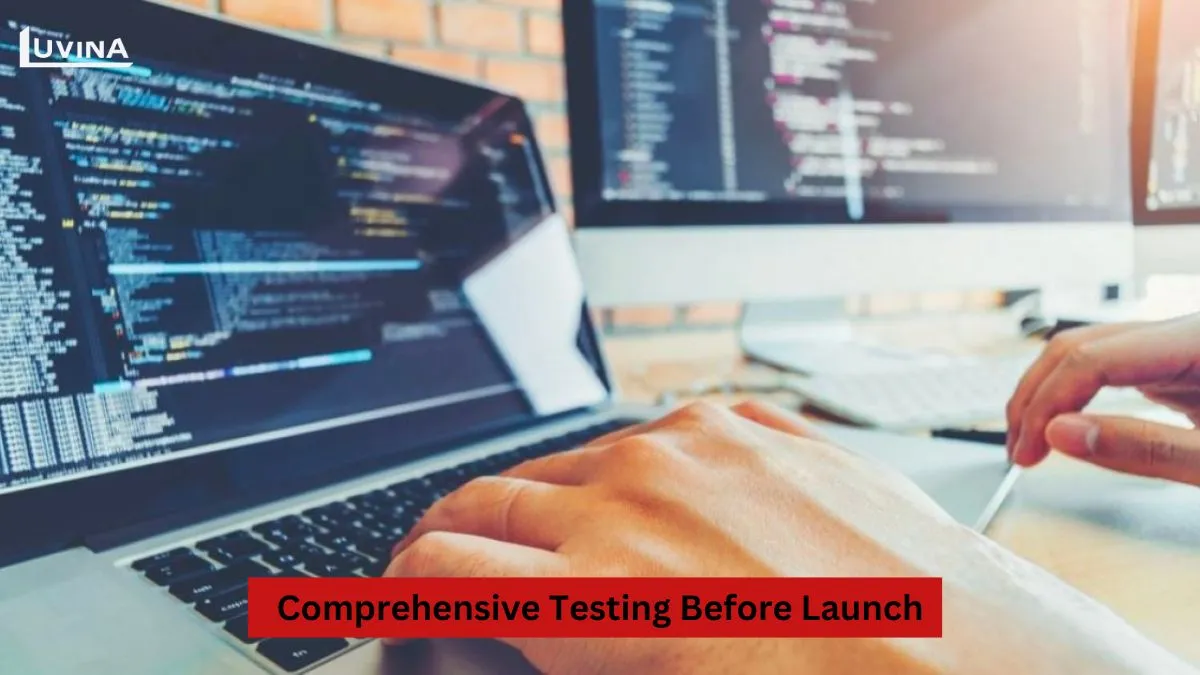
Start with functionality testing to see that everything works and functions as required. It would include checking users’ registration, course access, quizzes, and progress tracking. Then comes bug detection, which will find different technical problems that may hamper the user in using the product, like some broken links, bugs, or something.
Performance testing will also find out how the LMS will behave in different scenarios, like high traffic: whether it can bear the expected number of users without slowing down. Security testing is very critical because it ensures the safety of the data of its users; it also checks whether the system protects standards and laws about security. Finally, perform the UAT with end-users to get feedback on usability and possible issues given to the user.
Step 6: Launch your LMS
When all the tests are complete, with the changes that were required, go live with your LMS. The launch phase is very important if you’ve chosen to create LMS from scratch. First of all, start with a beta release of your LMS to a small number of users. This is the pre-release version that will allow you to infer feedback on performance and functionality regarding the whole platform, after which you will make final tuning to the problems that may remain until it goes live.
Alongside beta testing, make use of surveys and feedback forms to capture detailed user experiences and pinpoint areas for improvement. Based on this feedback, prioritize any updates or changes that need to be made. Finally, remember that the launch is just the beginning; continue to monitor your LMS and implement an ongoing process of continuous improvement, using user feedback to keep refining the system over time.
Step 7: Advertising your LMS
Once you have launched your LMS, it is about time you let the world know of its existence, and this is where the actual marketing begins. First of all, optimize your website for search engines. This will give your website more visibility and increase its organic traffic. You can run Pay-Per-Click (PPC) ads on websites like Google Ads to reach the target audience. Engage your potential users and existing customers with email marketing and content marketing-publishing informative blog posts and webinars. This will position your LMS as an authority in the education space, therefore encouraging more users to join.

Then there are educational institutions like schools and universities, with which it is also very important to partner. Offering certified courses and courses for certification adds to the credibility. Co-marketing with the institutions will give more reach. To create awareness, utilize social media to a large extent by sharing interactive content and influencing e-learning sector influencers. By the application of these steps, you will be able to gather a larger mass and ensure your long-term success in LMS software development.
Learning management system development cost
While planning the learning management system development cost, several factors should be taken into consideration. The total cost of the project can vary greatly depending on the complexity of the features, customization, and scale. Besides, maintenance, support, and scalability costs should also be considered. For instance, basic setup fees can range from $4,000 to $7,000, while more extensive systems may reach up to $25,000.
In addition to the setup, there are ongoing costs, such as annual licenses costing about $20,000 and per-user fees, probably in the range of $2 to $5. Other hidden costs to the budget include self-hosting fees estimated at about $25,000 as a one-time cost. Additional features usually come with an additional cost, ranging from $99 to $1,199 per month, while IT vendors can charge an additional $4,000 per month.
Estimating budget for custom LMS development:
- Initial development costs:
- – Requirement Analysis and Planning: $5,000-$10,000
- – UI/UX Design: $10,000-$20,000
- – Frontend and Backend Development: $50,000-$100,000.
- – Mobile App Development: $20,000-$40,000
- – Testing and Quality Assurance: $10,000-$20,000
- – Deployment: $5,000-$10,000
- Ongoing costs:
- – Hosting: $1,000-$5,000 per month
- – Maintenance and updates: $5,000 – $15,000 per month
- – Support services: $2,000-$10,000 per month
Key emerging trends
As the demand for online learning grows, LMS software development is evolving to meet new expectations. These innovations are shaping how learning management systems function and contribute to more effective, engaging learning experiences. Here are some key emerging trends:
1. LMS with virtual classroom
The integration of VR and AR technologies is transforming online learning by creating immersive, interactive environments. These technologies are especially useful in fields that require practical training, such as healthcare, engineering, and science. By combining VR/AR with adaptive learning, learners can engage in realistic simulations while the system adjusts to their needs, offering a highly customized and hands-on learning experience.

>> Also read: LMS with Virtual Classroom
2. Personalized learning experiences
Custom learning management system development is increasingly adopting AI and machine learning algorithms to provide personalized learning paths for each learner. These systems use data to recommend content and adjust to the individual’s learning style, performance, and progress. Adaptive learning further enhances this by tailoring the learning journey based on real-time feedback and learner behaviors. This ensures that each learner is provided with the most relevant content, helping them to achieve better results while progressing at their own pace.
Besides, AI-powered learning management systems enhance assessment accuracy by automating grading and offering in-depth analytics on engagement and knowledge retention. By leveraging machine learning, AI-driven LMS platforms not only streamline training but also unlock each learner’s full potential, making education more effective and personalized.
Get in touch with Luvina for your LMS development solution
Developing an LMS comes with several challenges, including ensuring seamless scalability to accommodate growing user bases, maintaining data security and compliance with educational standards, and integrating advanced technologies like AI and adaptive learning. Additionally, creating an engaging and user-friendly experience while optimizing performance across different devices requires careful planning and expertise.
Without a well-structured approach, these challenges can lead to inefficiencies, poor user adoption, and increased costs. That’s why choosing the right LMS software development partner is crucial to building a high-performing, scalable, and future-ready learning platform.
If you’re seeking a robust, efficient, and tailored learning management system, Luvina is the partner you need. As a leading LMS software development company, we specialize in custom learning management system development, ensuring that we can meet the unique needs of your organization, whether you’re looking to build a new system from scratch or enhance an existing platform.
Luvina’s team excels in providing customized solutions for educational institutions, startups, and enterprises looking to digitize their learning processes. We specialize in creating interactive, accessible, and highly personalized learning experiences that are both effective and engaging.
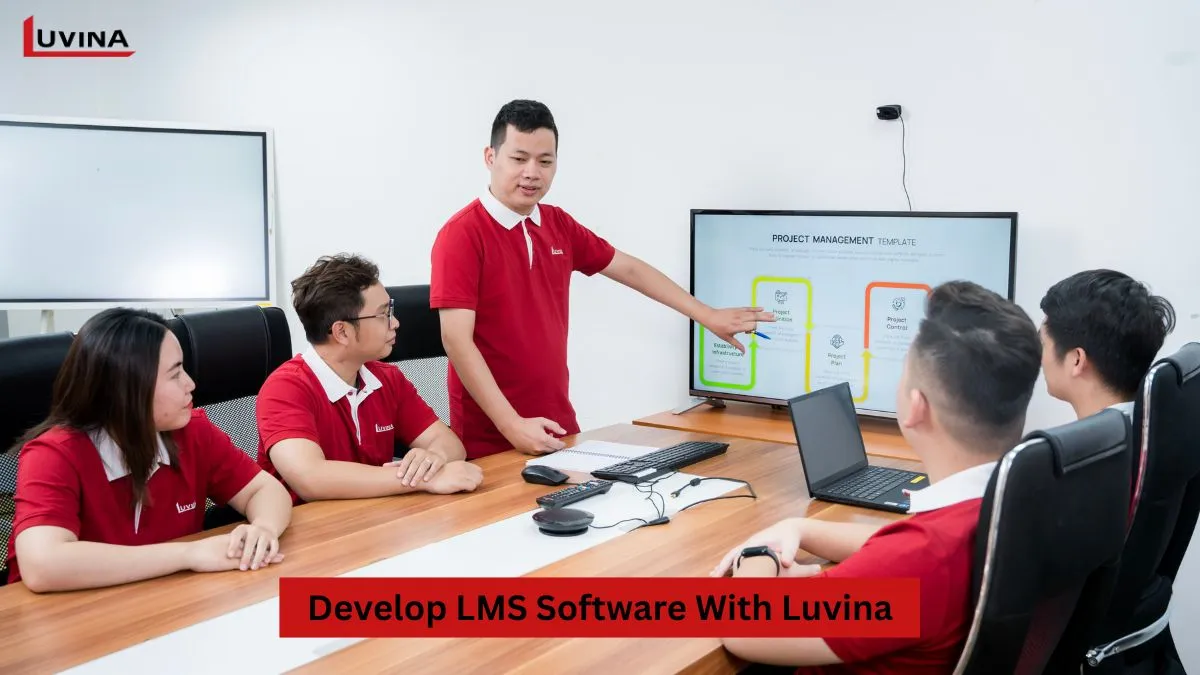
Our versatile development team focuses on creating high-performing LMS platforms that meet a variety of technical requirements. We prioritize scalability and performance to ensure that your system can grow with your needs. Additionally, we comply with essential EdTech standards such as GDPR, SCORM, WCAG, xAPI, and more to ensure your platform remains up-to-date with industry regulations.
With a talented team of 750+ engineers, UI/UX designers, business analysts, and project managers, we are committed to supporting you throughout the entire development process. Whether you’re just starting or need post-release support, Luvina is ready to assist in building a future-proof LMS that meets your goals.
>> Also read: Top 10 Free Online LMS Platforms
Conclusion
In conclusion, LMS software development plays a vital role in transforming how educational institutions and businesses deliver training and knowledge. As technology continues to evolve, staying ahead of the curve with modern LMS solutions is crucial for startups and companies looking to maintain their competitive edge. By partnering with an experienced development team, you can ensure your platform not only meets current needs but also adapts to future advancements.
If you are ready to create a customized and high-performing LMS, Luvina is here to support you every step of the way. Contact us today for expert guidance and a detailed cost estimate tailored to your unique requirements.
Related Posts:









Read More From Us?
Sign up for our newsletter
Read More From Us?
Sign up for our newsletter